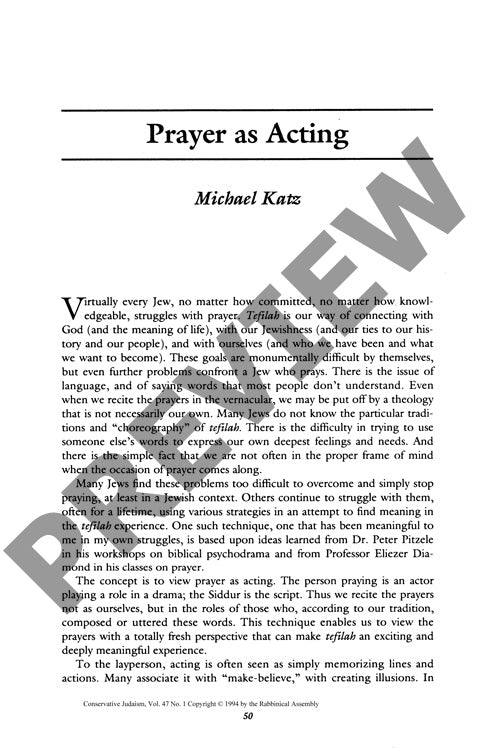Prayer as Acting
Couldn't load pickup availability
When traditional Jewish prayer feels like reciting someone else's script, it may actually work better embraced as exactly that - with the person praying taking on the role of an actor performing the words of historical figures. Drawing on biblical psychodrama and prayer studies, this methodology reconceptualizes liturgical practice by casting the Siddur as a dramatic text and practitioners as performers embodying the original authors and speakers of prayers. Through a systematic five-step process, participants research and inhabit the historical characters who composed specific prayers, analyze their conflicts while finding personal resonance, perform the prayers in character, and reflect on insights gained about both the historical figures and themselves. Detailed analyses of the Shema and Amidah demonstrate this technique, incorporating both traditional rabbinic interpretations and feminist perspectives that introduce female biblical figures as prayer models. The approach further conceptualizes entire services, particularly Shaharit, as five-act dramas progressing through Jewish historical epochs from Egyptian slavery to Temple worship. Key findings indicate that this theatrical framework facilitates divine communication by reducing personal discomfort, strengthens connections to Jewish heritage, promotes self-examination, and transforms rote recitation into dynamic spiritual experience. The method particularly addresses theological barriers by allowing practitioners to voice historical beliefs they may not personally hold, converting the challenge of prescribed prayer text into an opportunity for character development and empathetic understanding.

More Information
-
Physical Description
-
Publication Information
Published 1994
ISBN
-
Publication Credits
Michael Katz

